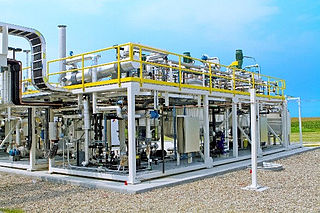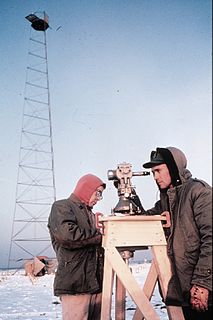 W
WIndustrial engineering is an engineering profession that is concerned with the optimization of complex processes, systems, or organizations by developing, improving and implementing integrated systems of people, money, knowledge, information, equipmk of Industrial Engineering. John Wiley & Sons, Inc; 3rd edition p. 5</ref>
 W
WJunior Philippine Institute of Industrial Engineers or JPIIE is an academic organization based in University of Perpetual Help System DALTA - Calamba Campus exclusive for BS Industrial Engineering students, faculty and alumni of the said university. It is one of the seven student organizations under the College of Engineering of the university which includes MES for BS Mechanical Engineering students and ACES for BS Civil Engineering among others. The organization is also a member of PIIE, a premier organization of BS Industrial Engineering graduates and students, and IE professionals in the Philippines. Engr. Philip Ermita, PIE, ASEAN Engr. is the organization's adviser aside from being the Dean of College of Engineering in the university.
 W
WThe defect concentration diagram is a graphical tool that is useful in analyzing the causes of the product or part defects. It is a drawing of the product, with all relevant views displayed, onto which the locations and frequencies of various defects are shown.
 W
WA demonstration plant is an industrial system used to validate an industrial process for commercialization. It is larger than a pilot plant, and is the final stage in research, development and demonstration of a new process. Demonstration plants are built in a range of sizes, and the term 'demonstration plant' can sometimes be used interchangeably with 'pilot plant.' However, demonstration plants are generally larger than pilot plants, and are often constructed following a successful trial in a pilot scale size. Demonstration plants are used to prove a process works at industrial scale, and is financially viable in its intended industry.
 W
WThe design of experiments is the design of any task that aims to describe and explain the variation of information under conditions that are hypothesized to reflect the variation. The term is generally associated with experiments in which the design introduces conditions that directly affect the variation, but may also refer to the design of quasi-experiments, in which natural conditions that influence the variation are selected for observation.
 W
WThe flow process chart is a graphical and symbolic representation of the activities performed on the work piece during the operation in industrial engineering.
 W
WFollow the Sun (FTS), a sub-field of globally distributed software engineering (GDSE), is a type of global knowledge workflow designed in order to reduce the time to market, in which the knowledge product is owned and advanced by a production site in one time zone and handed off at the end of their work day to the next production site that is several time zones west to continue that work. Ideally, the work days in these time zones overlap such that when one site ends their day, the next one starts.
 W
WHuman factors and ergonomics is the application of psychological and physiological principles to the engineering and design of products, processes, and systems. The goal of human factors is to reduce human error, increase productivity, and enhance safety and comfort with a specific focus on the interaction between the human and the thing of interest.
 W
WHuman Factors in Engineering and Design is an engineering textbook, currently in its seventh edition. The book, first published in 1957, is considered a classic in human factors and ergonomics, and one of the best-established texts in the field. It is frequently taught in upper-level and graduate courses in the U.S., and is relied on by practicing human factors and ergonomics professionals.
 W
WThe Indian Institution of Industrial Engineering (IIIE) is a non-profit organization and registered society for propagating the profession of Industrial Engineering in India. It was founded in 1957 and is a Registered Public Trust under the Bombay Public Trust Act, 1950.The headquarters is at Navi Mumbai. IIIE is a member organization of Engineering Council of India.
 W
WThe Institute of Industrial and Systems Engineers (IISE), formerly the Institute of Industrial Engineers, is a professional society dedicated solely to the support of the industrial engineering profession and individuals involved with improving quality and productivity.
 W
WManufacturing engineering is a branch of professional engineering that shares many common concepts and ideas with other fields of engineering such as mechanical, chemical, electrical, and industrial engineering. Manufacturing engineering requires the ability to plan the practices of manufacturing; to research and to develop tools, processes, machines and equipment; and to integrate the facilities and systems for producing quality products with the optimum expenditure of capital.
 W
WThe Manufacturing Engineering Centre (MEC) is an international R&D Centre of Excellence for Advanced Manufacturing and Information Technology. The MEC was founded in 1996 under the directorship of Professor Duc Truong Pham. The Centre forms part of Cardiff University, which dates back to 1883 and is one of Britain's major civic universities.
 W
WIn the design of experiments, optimal designs are a class of experimental designs that are optimal with respect to some statistical criterion. The creation of this field of statistics has been credited to Danish statistician Kirstine Smith.
 W
WPackage testing or packaging testing involves the measurement of a characteristic or property involved with packaging. This includes packaging materials, packaging components, primary packages, shipping containers, and unit loads, as well as the associated processes.
 W
WPackaging engineering, also package engineering, packaging technology and packaging science, is a broad topic ranging from design conceptualization to product placement. All steps along the manufacturing process, and more, must be taken into account in the design of the package for any given product. Package engineering is an interdisciplinary field integrating science, engineering, technology and management to protect and identify products for distribution, storage, sale, and use. It encompasses the process of design, evaluation, and production of packages. It is a system integral to the value chain that impacts product quality, user satisfaction, distribution efficiencies, and safety. Package engineering includes industry-specific aspects of industrial engineering, marketing, materials science, industrial design and logistics. Packaging engineers must interact with research and development, manufacturing, marketing, graphic design, regulatory, purchasing, planning and so on. The package must sell and protect the product, while maintaining an efficient, cost-effective process cycle.
 W
WA pilot plant is a pre-commercial production system that employs new production technology and/or produces small volumes of new technology-based products, mainly for the purpose of learning about the new technology. The knowledge obtained is then used for design of full-scale production systems and commercial products, as well as for identification of further research objectives and support of investment decisions. Other (non-technical) purposes include gaining public support for new technologies and questioning government regulations. Pilot plant is a relative term in the sense that pilot plants are typically smaller than full-scale production plants, but are built in a range of sizes. Also, as pilot plants are intended for learning, they typically are more flexible, possibly at the expense of economy. Some pilot plants are built in laboratories using stock lab equipment, while others require substantial engineering efforts, cost millions of dollars, and are custom-assembled and fabricated from process equipment, instrumentation and piping. They can also be used to train personnel for a full-scale plant. Pilot plants tend to be smaller compared to demonstration plants.
 W
WPower plant engineering or power station engineering is a division of power engineering, and is defined as "the engineering and technology required for the production of central station electric power." The field is focused on the generation of power for industries and communities, not for household power production. The field is an interdisciplinary field, using the theoretical base of both mechanical and electrical engineering. The engineering aspect of power plant management has evolved with technology and has become progressively more complicated. The introduction of nuclear technology and the progression of other existing technologies have allowed power to be created in more ways and on a larger scale than was previously possible. The assignment of different types of engineers to the design, construction, and operation of a new power plant is dependent on the type of system being built such as whether it is a fossil fuel thermal power plant, nuclear power plant, hydroelectric plant, or solar plant.
 W
WIn manufacturing engineering, process layout is a design for the floor plan of a plant which aims to improve efficiency by arranging equipment according to its function. The production line should ideally be designed to eliminate waste in material flows, inventory handling and management. In process layout, the work stations and machinery are not arranged according to a particular production sequence. Instead, there is an assembly of similar operations or similar machinery in each department
 W
WIn statistics, response surface methodology (RSM) explores the relationships between several explanatory variables and one or more response variables. The method was introduced by George E. P. Box and K. B. Wilson in 1951. The main idea of RSM is to use a sequence of designed experiments to obtain an optimal response. Box and Wilson suggest using a second-degree polynomial model to do this. They acknowledge that this model is only an approximation, but they use it because such a model is easy to estimate and apply, even when little is known about the process.
 W
WA routing diagram or route diagram in the field of management engineering is a type of diagram, that shows a route through an accessible physical space. Routing diagrams are used in plant layout study, and manufacturing plant design.
 W
WA time and motion study is a business efficiency technique combining the Time Study work of Frederick Winslow Taylor with the Motion Study work of Frank and Lillian Gilbreth. It is a major part of scientific management (Taylorism). After its first introduction, time study developed in the direction of establishing standard times, while motion study evolved into a technique for improving work methods. The two techniques became integrated and refined into a widely accepted method applicable to the improvement and upgrading of work systems. This integrated approach to work system improvement is known as methods engineering and it is applied today to industrial as well as service organizations, including banks, schools and hospitals.